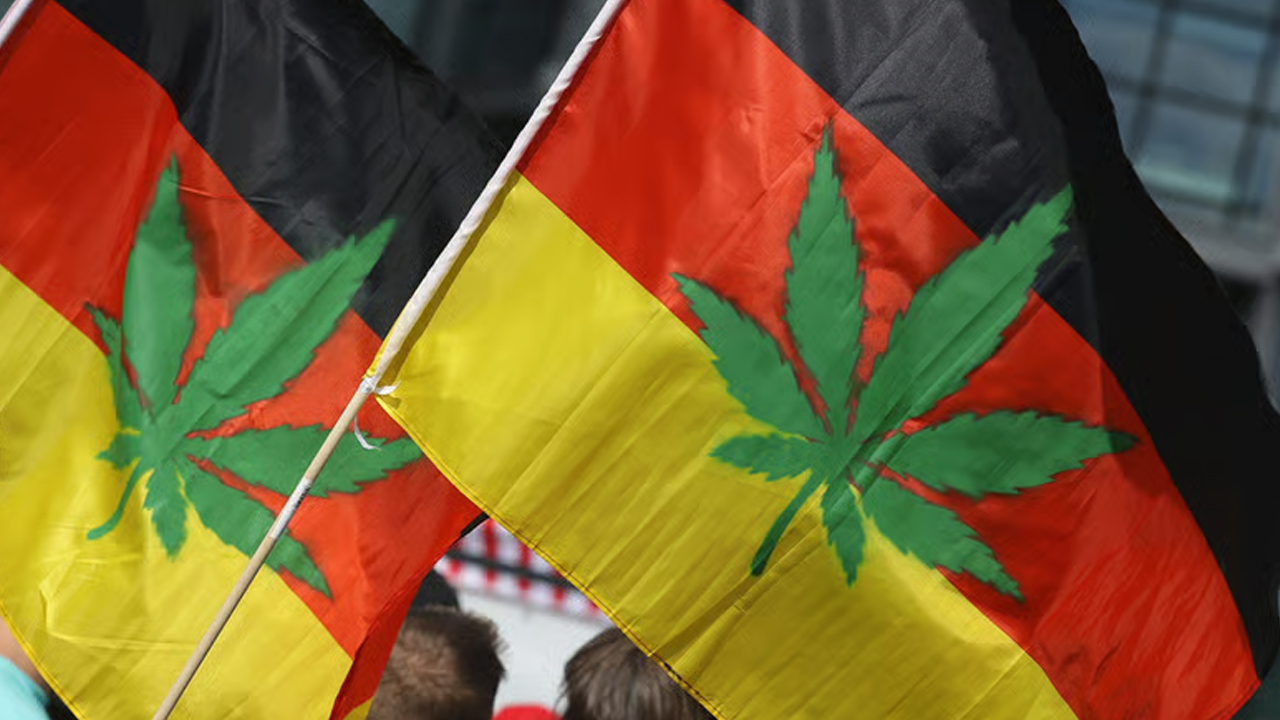
The cannabis plant has a long history of practical, medical and recreational use in human cultures all over the world, and Germany is no exception. Evidence of hemp cultivation has been seen at Neolithic sites across Eurasia since at least 5000BC. Despite being prohibited for some 100 years, cannabis is now back with a bang in Germany. It was legalised for medicinal uses in 2017, and for recreational use in 2024.
But what happened between then? From the origins of cannabis in the Asian steppes to its ancient uses and its gradual spread around the world, to prohibition both globally and locally and – now – legalisation and medicinal research that proves the deeper links between this plant and our physiology, this is the abridged history of cannabis in Germany.
Ancient Uses and Origins in Central Asia
Although it is not possible to know exactly, scientists believe that cannabis first evolved from the nettle and hops family of plants. Its psychoactive and medicinal properties are caused by a family of chemicals called cannabinoids.
The most common is THC, or tetrahydrocannabinol, but CBD (cannabidiol) is another common one. In total some 85 cannabinoids have been found in cannabis plants, alongside hundreds of other organic compounds like terpenes and flavonoids. Scientists have speculated that cannabis may have evolved to create these compounds on itself as a defense mechanism against predation from insects.
Today, as long as you have a medical prescription, there’s no need to go travelling the world to find weed, as Germans can buy cannabis legally online. Medical cannabis is prescribed, entirely online, by specialist doctors from trusted clinics, who can help you find the option you need to treat your condition. Simple!
The first peoples to keep historical records of cannabis cultivation and use were Chinese societies of 5000BC. Although primarily used for hemp fibres, there is some archaeological evidence of it being burned – which implies recreational or medical use.
Global Spread and Early Medicinal Practices
The oldest name for cannabis as we know today comes from the Sanskrit language. In this precursor to modern day Indian languages, cannabis was called Ganja. A name Europeans will still recognise today. That’s because some of the first peoples to introduce the cannabis plant to Europeans were Indians, including during the days of Napoleon.
The earliest known confirmed medical text mentioning cannabis as a treatment come from the records of Chinese Emperor Fu Hsi, around 5000 years ago in 2900BC. Around 200BC the Roman educator and historian Pliny the Elder mentioned boiled cannabis as a remedy for pain and cramps.
By the 1800s, cannabis was being used across Europe – including in Germany. The French, in particular, were big on compressed hashish. Famous poet Charles Baudelaire wrote extensively on the topic in his 1860 book Les Paradis Artificiels. However, by the early 1900s, the tide was turning.
In 1929, the German government introduced the first modern narcotic legislation. Mainly focused on opiates, it also included limits on the production of cannabis. Around that time, many powerful countries were also banning cannabis.
Bans and Prohibition Come into Force
Pressures on the United Nations, backed by science that is today largely considered unfounded by historians, pushed it to add cannabis to Schedule IV on the 1961 Convention on Narcotic drugs. The treaty was signed by the majority of the UN, leading to an essentially global ban. In 1971 this was ratified into German law with the Narcotic Drugs Act (BtMG).
Today, you can find all sorts of cannabis strains in Germany. Which is important for legal medical patients, because the thousands of varying strains of cannabis are now quite different from historical varieties. And each can have subtly different effects, which can be more pronounced in medical patients. So, learning from other patients’ experiences of strains through reviews and ratings, as well through a registered clinician, is more important than ever.
Although illegal for the public, some researchers continued to work with the government to legally research cannabis. The black market trade also thrived throughout this time.
One of the earliest modern researchers using the scientific method to look at cannabis in depth, was American Roger Adams. In the 1940s he first identified CBD as one of the key molecules in the plant. Israeli Raphael Mechoulam identified and isolated THC, and also went on to discover the human endocannabinoid system.
This key system in human physiology is interestingly similar to the cannabis plant’s molecules. This discovery was instrumental in encouraging further research into cannabis’ possible therapeutic effects.
Medical Legalisation Returns
It wasn’t until the mid 1990s, with modern research gathering pace into cannabis’ therapeutic effects, that legalisation began to return. In 1996, California became the first American state to legalise medical cannabis, defying federal law. Canada became the first country to legalise in 2001.
After California legalised medical cannabis, thousands of Germans immediately began campaigning for the same. Hanfparade or Hemp Parade was a large legalisation demonstration that took place yearly in Berlin from 1996.
Germany began offering some THC and CBD licensed medications in 2008, although on a very limited scale. Medical cannabis flower was legalised in 2017, and then full recreational legalisation followed in April 2024. That made Germany the seventh country to open a fully legal market, since prohibitions began to be repealed globally. Now in 2025, an estimated 900,000 Germans are treating medical conditions with cannabis and the country is one of the world’s largest importers of legal weed.

